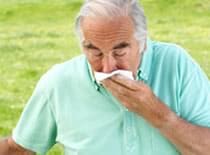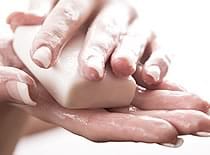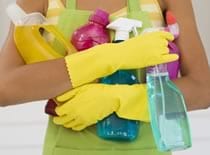His first few months were practically a nightmare. He was a VERY light sleeper and was very difficult to take care of as he pretty much woke up and started crying almost every half an hour. So me and my wife had to take turns looking after him and basically didn't get much sleep. As he grew older, he went to bed about 12am. Now he is sleeps earlier, but I pretty much only get to do my own stuff (work, leisure, etc) after the kids are asleep. Obviously sleeping late will take a toll on your health. Which was why this forwarded mail caught my attention, and I'm going to share it with you.
The email consist of 2 sections:-
Section 1: Natural Therapy For Heart Vein Opening
The 1st part is a natural therapy for heart vein opening. Not sure if it works, but since it's ingredients are all natural and are not life threatening, I decided to share it with you without doing any research. Feel free to try it and tell me if it works :) And also tell me about the taste too LOL! Well, here it is:
"Dear All,
Natural therapy for heart vein opening
Please pass it to your colleagues or friends.
For Heart Vein opening
1) Lemon juice 01 cup
2) Ginger juice 01 cup
3) Garlic juice 01 cup
4) Apple vinegar 01 cup
Mix all above and boil in light flame approximately half
hour, when it becomes 3 cups, take it out and keep it
for cooling. After cooling, mix 3 cups of natural honey
and keep it in bottle.
Every morning before breakfast use one Table spoon
regularly. Your blockage of Vein's will open
(No need any Angiography or By pass)"
Section 2: Sharing Of Experience
This is an email about a person who had a severe heart attack symptom and was rushed to the hospital. He was sharing about his experience but more importantly, his lifestyle, which is quite similar to mine, except the smoking part. He also shared the doctor's recommended lifestyle. So take a read and see if it's applicable to you.
This is e-mail received from a person working in a Software Company
Dear colleagues, I am working in Blore Software City ....... I wanted to share an incident of my life with you, hoping that it may be an eye opener to you so that you can live more years.
On 27th October afternoon, I had severe heart attack symptom and I was rushed to the hospital.
After reaching to the hospital, the doctors prescribed a test called angiogram.. This test is basically to identify blood flow of heart arteries. When they finished the test they found a 94% block in the main artery, please see the image below with red circle.
At this point, I wanted to share my living style, which has caused this block in my heart arteries. Please see the below points of my life style, if any of these points are part of your life style then you are at risk, please change yourselves.
1. I was not doing any physical exercise for more than 10 years , not even walking 30 minutes a day for years.
2. My food timings are 11:00 AM Breakfast or no Breakfast, 3:00 PM to 4:00 PM Lunch and dinner at 11:00 PM to 12:00 AM.
3. Sleeping in very odd timings, going to bed between 12:00 AM and 3:00 AM. Waking up at between 9:00 AM and 10:30AM ........ Some times spending sleepless nights.
4. I used to eat heavily because of long gaps between lunch and dinner and I used to make sure that Non-Veg is available most of the time, there were times when I did survey on city hotels to find delicious Non-Veg dishes. I was never interested in vegetable and healthier food.
5. Above all I was chain smoker from years.
6. My father passed away due to heart problems, and the doctors say the heart problems are usually genetic.
Once they identified the major block they have done immediately a procedure called angioplasty along with 2 Stints, mean they will insert a foreign body into the heart arteries and open the blocked area of arteries. Please see the below image after the procedure.
I learnt from the doctors that 60% people will die before reaching the hospital,20% people will die in the process of recovering from heart attack and only 20% will survive .. In my case, I was very lucky to be part of the last 20%.
Doctors instructions:
1. Need to have physical exercise for minimum of 45 minutes daily.
2. Eat your food at perfect timings, like how you eat during your school days. Eat in small quantities more times and have lot of vegetables and boiled food, try to avoid fry items and oily food. Fish is good than other non-vegetarian food.
3. Sleep for 8 hours a day, this count should complete before sun rising.
4. Stop smoking.
5. Genetic problems, we cannot avoid but we can get away from it by having regular checkups.
6. Find a way to get relived from the stress.
So I urge you all to please avoid getting into this situation, it is in your hands to turn the situation up side down, by just planning / changing your life style, by following simple points above.
If you find it's useful you can forward this mail to your friends and loved ones.....
Like for all the things I received in the email, do take it with a pinch of salt, but in this case I really don't think there's any harm in knowing these information,whether you follow them or not LOL!
I'm working on changing my lifestyle, but with my 3rd child arriving.... Well, let's hope I'll be successful before it's too late :P
TOP OF PAGE











47. | August 10, 2007 at 2:08 am
| August 10, 2007 at 2:08 am
hi june and madam tan,i dare not recomend u to any cord blood banks in particular.coz dun want u to think im solicitating for them.what u can do is, call up the other two co.firstly ask them,are they taking in Hep carrier baby’s sample?
secondly, do they take maternal blood?
thirdly,do they have a certified cleanroom?
once these questions are all a yes, then u can proceed asking them their pricing,promotions etc.
hope this help….oh btw,there are 2 more co. out there june. so go find out about it….